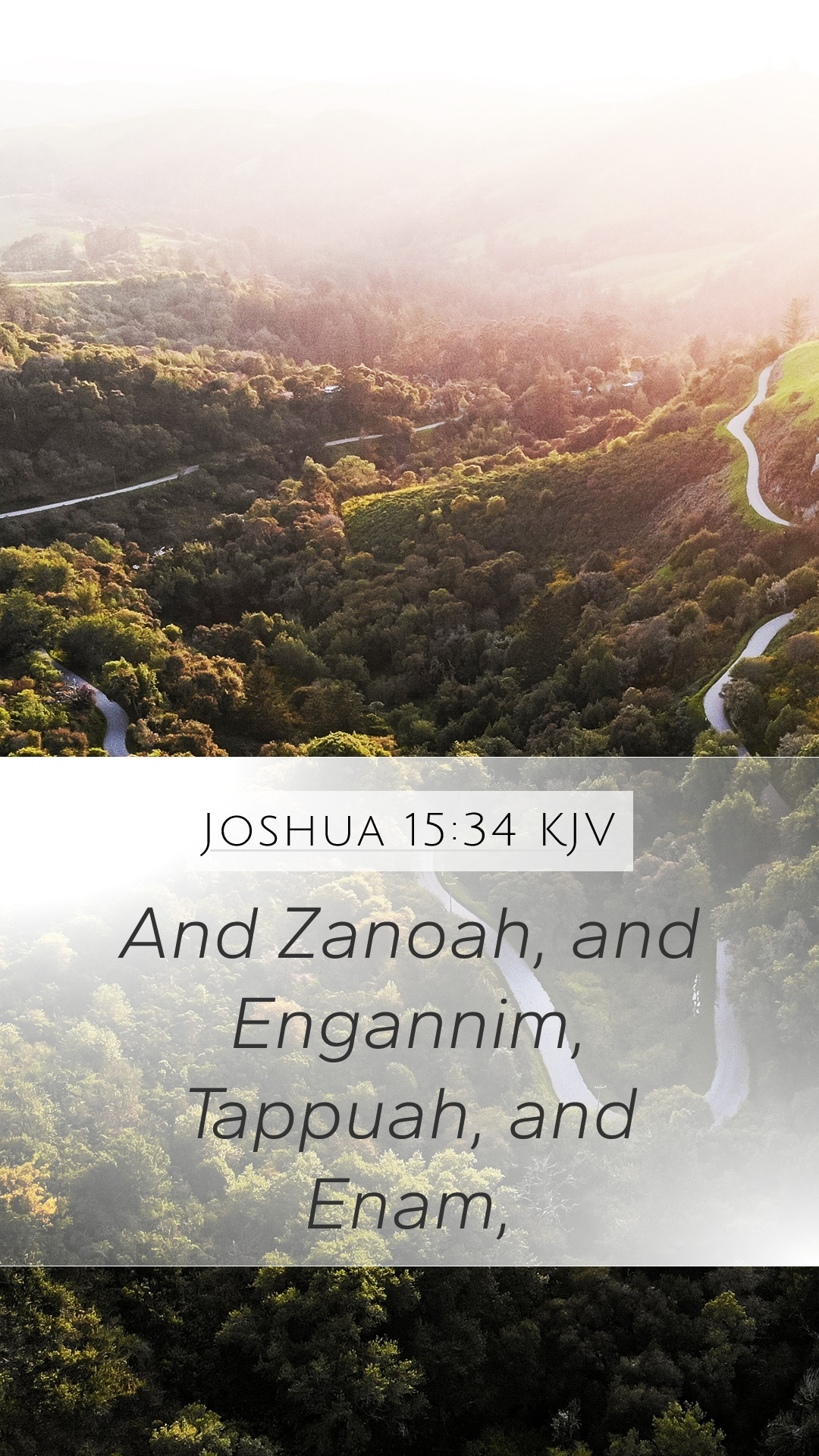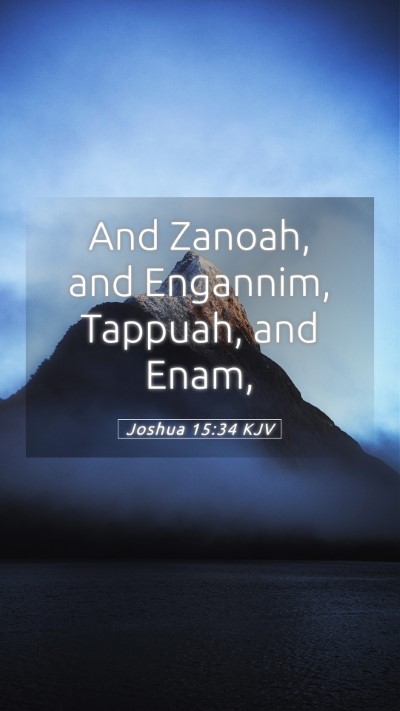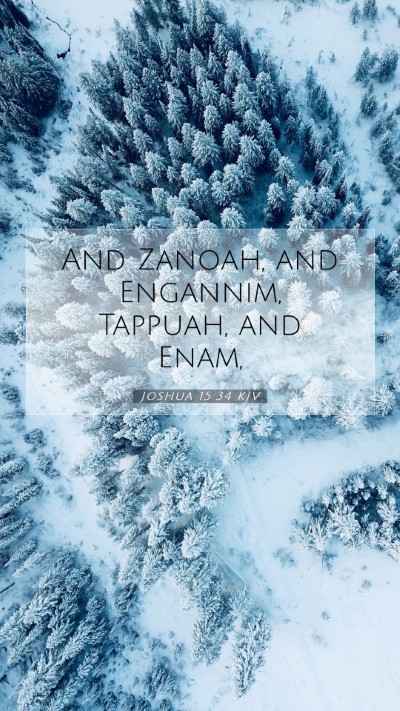Understanding Joshua 15:34
Joshua 15:34 states, "And in the valley, Eshtaol, and Zorah, and Ashnah." This verse is part of the greater narrative within the Book of Joshua, which delineates the boundaries and territories associated with the tribes of Israel as they settled in the Promised Land. Exploring this verse provides essential insights into geography, tribal inheritance, and biblical significance.
Bible Verse Meanings and Interpretations
To fully grasp the meaning of Joshua 15:34, one must consider several contextual aspects. Understanding the geographical layout of Canaan, the cultural implications of the cities mentioned, and their historical significance helps convey deeper meaning to this verse.
Geographical Significance
Joshua lists cities and regions occupied by the tribe of Judah, which includes:
- Eshtaol: A city known for its strategic location, often associated with the dwelling of Dan.
- Zorah: Famous as the birthplace of Samson, a significant biblical figure.
- Ashnah: Historical references to this city are limited, emphasizing the broader context of God's promise to Israel.
Biblical Exegesis and Context
The verse comes after extensive lists of territories, emphasizing the fulfillment of God's promises to Abraham, Isaac, and Jacob concerning the land. This passage indicates not only the physical land allocation but also sets a framework for understanding the importance of land in God's covenant relationship with Israel. Matthew Henry's commentary notes that such lists underline God's faithfulness to His promises.
Application for Believers
In modern life, Joshua 15:34 can serve as a reminder of God's active role in leading and providing for His people. It serves to encourage believers to trust in God's detailed plans for their lives, paralleling how God guided Israel during its settlement in the Promised Land. Adam Clarke points out that acknowledging God's past provisions can strengthen faith in contemporary settings.
Historical Context and Cultural Insights
The historical context enriches the understanding of the verse. The cities listed had various roles culturally and politically in ancient Israel. For example, the mention of Zorah connects to narratives about Samson, highlighting God’s work in delivering Israel through leaders from these regions. Such insights contribute to a deeper scriptural analysis, illuminating the often complex interplay of geography, culture, and divine promise.
Bible Commentary Insights
For in-depth study, utilizing tools and resources from various commentaries can enhance understanding:
- Matthew Henry: Comments on the faithfulness of God in apportioned lands and what that signifies for God's people.
- Albert Barnes: Provides historical and spiritual significance of cities in relation to the overall narrative of Israel's journey.
- Adam Clarke: Emphasizes the need for believers to reflect on their spiritual inheritance as parallel to the physical inheritance portrayed in this passage.
Cross References to Consider
Several other passages correlate with the themes in Joshua 15:34, enhancing interpretation:
- Judges 13:2-5: The story of Manoah and the birth of Samson, highlighting Zorah's significance.
- Joshua 19:40-48: Additional territories allotted to the tribe of Dan, relevant for understanding the surrounding regions.
- Deuteronomy 34:4: God's promise to Moses regarding viewing the Promised Land further underscores the covenant aspect.
Conclusion
In summary, Joshua 15:34 presents a succinct but profound look into the allotting of land within the context of God's promises and historical significance. For those engaged in Bible study, the insights garnered from this verse can facilitate deeper scripture analysis and reflection on the broader narratives of faith, obedience, and divine provision.


